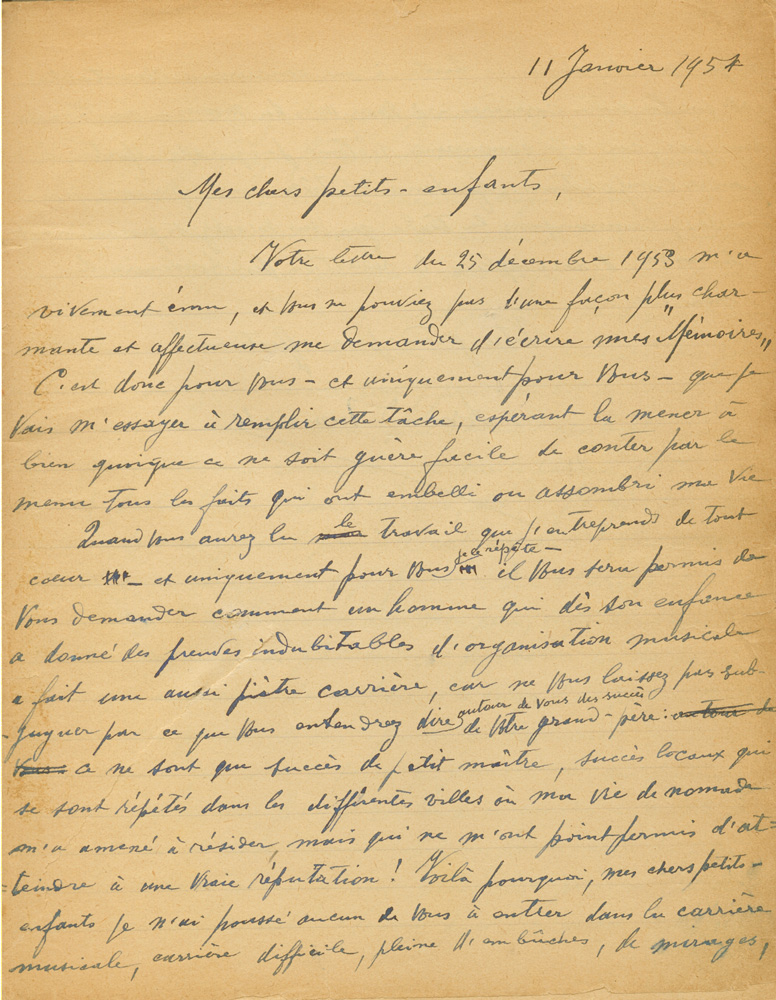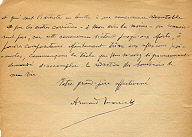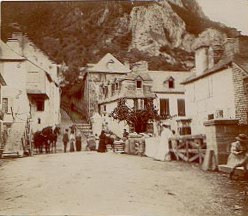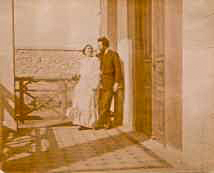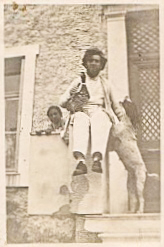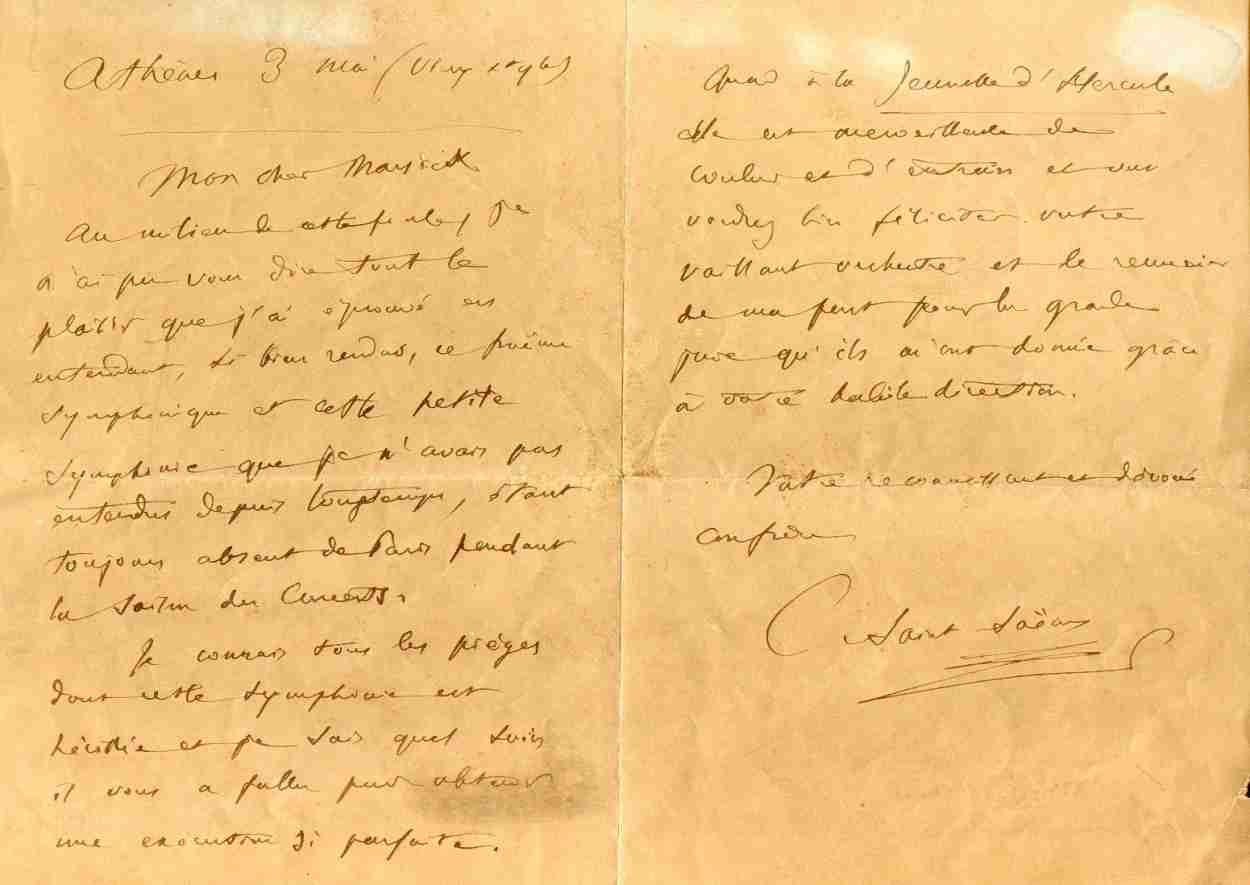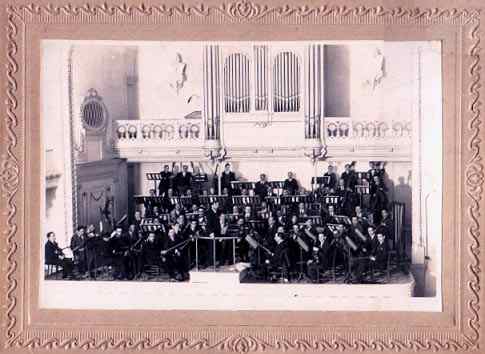Par Jacques Marsick. 26 juillet 1994
 Christmas 1956
Christmas 1956
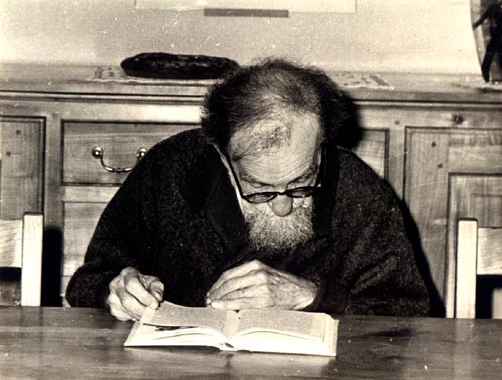
©archives Jacques MARSICK
At Christmas 1956, Armand Marsick's grandchildren wrote to ask him to write his memoires. He was very moved by this request and set to work. Unfortunately, remembering his life was so painful for him that he soon gave up.
From the preface onwards he was harsh on himself and gave his grandchildren a strange reply. This is what he confided to them:
" When you have read the work that, I repeat, I am wholeheartedly undertaking for you {...}, you may well wonder how a man, who from childhood showed indubitable proof of musical organisation, could have such a poor career. Do not let yourselves be influenced by what you hear around you of your grandfather's success: this is only the success of a "little master", local success which was repeated in the different towns where my nomadic life has taken me, but which did not allow me to attain a real reputation! That is why, my dear grandchildren, I have not encouraged any of you to take up a musical career – a difficult one with stumbling blocks and mirages and which places the artist in a struggle and in fierce competition which other careers, in my view at least, do not experience. For this competition extends to the dead, O poor composers ..."
Who, therefore, is this " little master"? What is this " local success" ? We do not claim that he equalled the great names in the history of music, but his career was rich with many different experiences. He was an excellent violinist, and was strongly encouraged by his uncle Martin-Pierre Marsick to compose. He later devoted a great deal of time to methods of teaching music. Finally, as their conductor, he was to be at the root of the birth or the rebirth of numerous orchestras. In short, a fine career...
So why did he judge himself so bitterly? It was the composer himself who was bitter - doubtless victim of a fashion. His most interesting pages were written before 1914. He belonged to the César Franck School. However, at the same period, Stravinsky imposed himself as a musical genius and his writing both upset and innovated. However much Armand Marsick claimed that Stravinsky was incapable of writing a perfect chord (sic), it was the works of Stravinsky, Hindemith, Ravel, Boulez etc. that were performed. He was not the only one to sink into oblivion.
Time would pass before it was realised that all these musicians, who made up the French school after 1870, had written very fine music and deserved to come out of the anonymity in which they had virtually been locked up.
We thought that this preamble was necessary to present the biography of Armand Marsick who was born on 20th September 1877 in Liège, Belgium. His birth was quite an event. His parents Louis and Marie already had four daughters and his birth gave them everything they could wish for - all the more so when other daughters were born later!
 The origins of the family
The origins of the family
Dating back to the beginning of the 18th century, the family was from Liège.
Their origins went back to Bohemia, no doubt. In 1707, a certain Johannes MARSCHICK married a young lady from Liège, Aelid Dodémont and then settled in the
principality of Liège.
Louis Marsick (1843-1901), Armand's father, and Martin-Pierre Marsick had 16 brothers and sisters, born from two marriages. Their father Pierre-Joseph (1819-1888) was a lamp-maker but also a good violinist.
Louis and Martin-Pierre were both to become musicians, but Louis sacrificed his career to allow Martin-Pierre to succeed in his. He was, however, as gifted as Martin-Pierre. He obtained the silver-gilt medal in the higher violin competition at the Liège conservatoire in 1861 and also won the first prize for the cello. He developed his career mostly in Liège for 47 years where he started as solo drum at the age of eleven. Meanwhile Martin-Pierre led an exceptional career as a virtuoso and teacher at the Paris Conservatoire where he trained, among others, Jacques Thibaud, Carl Flesh and Georges Enesco.
Armand, therefore, lived in a very special environment all the more so as his mother, before her marriage, was a wardrobe mistress at the Liège Royal Opera House.
When he was five years old, his father gave him his first quarter violin and a bow which he immediately hung on the study wall. It was only when he was aged seven and after two years of music theory that the instrument was taken down and he had his first lesson with his father.
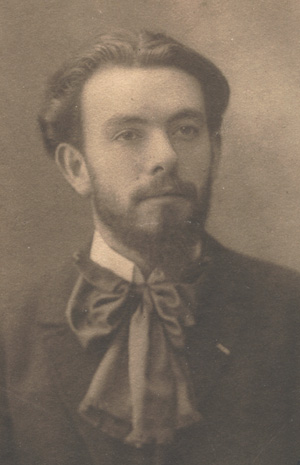
1908
©archives Jacques MARSICK
From then on he made fast progress.
At the age of ten, he joined the class of Desiré Heynberg at the Liège Royal Conservatoire.
He also studied the piano with J. Lebert and chamber music with R. Massart, and had his first composition lessons with Sylvain Dupuis.
In 1897 at the age of nineteen, he won the silver-gilt medal at the higher violin competition, the same as his father had won.
But Armand started composing at the age of nine or ten.
He records in his memoires that at primary school he was caught composing by his teacher.
He was thus sent out of class.
At the same period he composed a romance for violin and soprano, but no one believed that he was the composer.
He was mortified. « One should never make such remarks to a child? », he wrote,
« One should never doubt his work. (...) this is liken to pouring the first drop of pessimism into a child's heart. »
Armand was inherently honest and straight forward. He was completely un-calculating and incorruptible and an indefatigable worker, very attached to his family and respectful of his parents. As soon as he learnt to write, he sent them charming New Year wishes. Later on, when in Paris, he wrote dozens of cards to his sister, Berthe. He returned to Liège each year, from wherever he was, to embrace his sister, uncles, aunts, cousins...
And, towards the end of his life, from 1943, he was to be the most wonderful grandfather, endowed with unheard of patience with his grandchildren – he who hardly had any patience at all, if only with ministers.
H is first “official” composition was “Religious Thought” in 1894, dedicated to his sister, Berthe, the middle daughter of the family. Then in 1895, he wrote an “Adagio Pathétique” for violin and orchestra and, in 1896, a “Cantata in two voices for boys and girls”, entitled “To science”. This title was not surprising as he had always been passionate about technological innovations. How often did he recount the Wright Brothers' flight whose demonstrations he had witnessed on the Champ de Mars? For Christmas in 1956 or 57, his son Louis, could not have given him greater pleasure than with the book “ History of Science and Techniques ” by P. Rousseau. In 1897, he left Liège for Nancy where he was appointed first violin with the Theatre and the Conservatoire Orchestra. He joined the composition class of Guy Ropartz But Armand Marsick also performed as a soloist, particularly at Le Havre where a fine career as an instrumentalist was predicted for him. Then he arrived in Paris where he was to stay for ten years; the first evening spent at his uncle's home (Martin-Pierre) is worth describing.
 An evening at Martin-Pierre's home
An evening at Martin-Pierre's home
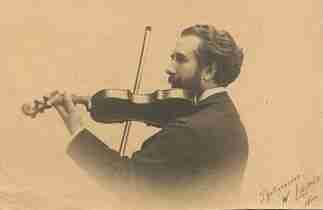
© archives Jacques MARSICK
Martin-Pierre artin-Pierre was at the height of his glory. He was considered to be one of the greatest violinists and the greatest violin teacher. No small praise! Armand, in a letter to his parents dated 2nd June 1898 describes this visit in detail: how his uncle criticised the way his violin was mounted (Sylvestre repaired it the next day and “mounted it in the Marsick fashion - that is excessively taut”) Armand knew nothing ... but this “nothing” couldn't have been so negligible since Martin-Pierre gave him many private lessons and recommendations as well to the best of his ability. That same evening, Martin-Pierre heard Armand's first compositions. “Yes, said Martin-Pierre in a serious voice, yes, there is a Marsick who plays the violin admirably well – but we don't need two! Work on your composition, you have what it takes to succeed! Armand added “I will never forget these words!” This did not prevent Martin-Pierre from immediately giving him his Amati, which he had never lent anyone, for just enough time to play a few pieces! What an evening! From then on they were definitely linked
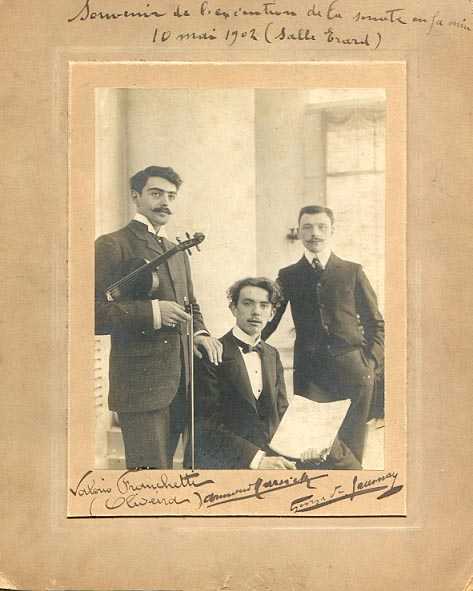
© archives Jacques MARSICK
Armand was immensely grateful to an uncle who showed overwhelming affection for his nephew. In 1923, serious health problems alone prevented Martin-Pierre from going to Bilbao to work on the birth of the Conservatoire with his nephew.
Thus, thanks to his uncle, Armand came onto the Parisian musical scene. While attending lessons with Leneveu and Vincent d'Indy at the Conservatoire, he immediately became first violin at the Concerts Colonne and the Opéra Comique, a function that was rarely entrusted to a foreigner. It was in this position that he performed "La Mer" with Claude DEBUSSY himself.
This period was also his most creative and Armand then composed his most beautiful pages: the sonata for violin and piano in 1900, "Stèle Funéraire" in memory of his father (1902), "La Jane", his first lyrical work, "Improvisation et Final", for cello and orchestra, a passionate work, many melodies, "La Source" (1908), "Les Scènes de Montagne", which he finished later in Greece...
 Departure for Greece
Departure for Greece
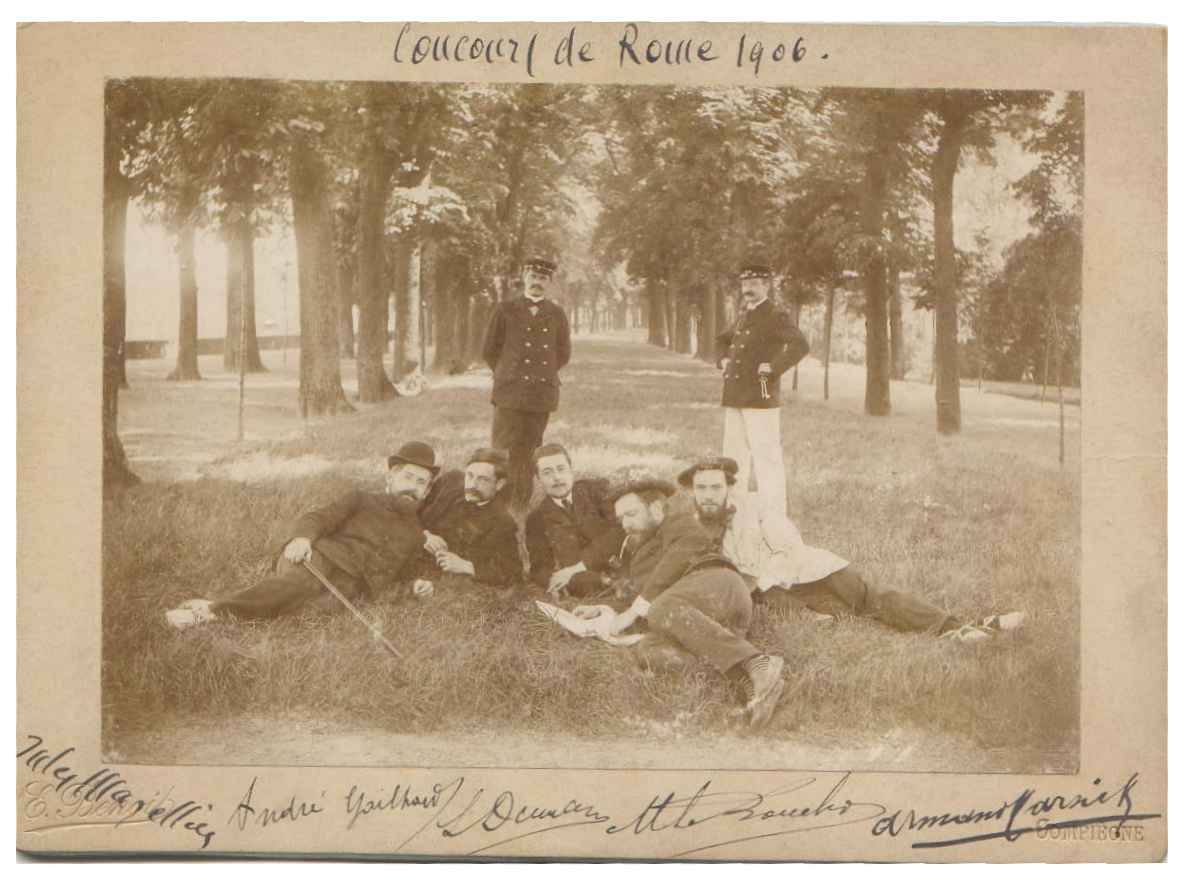 Click to enlarge
The Prix de Rome competition
Click to enlarge
The Prix de Rome competition© archives Jacques MARSICK
(Click to enlarge)
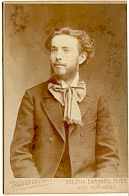
He unsuccessfully attempted the Prix de Rome competition in 1906 and was terribly disappointed at what he felt was an unfair result.
Therefore, at the end of 1908 he embarked for Athens where, on the recommendation of Edouard Colonne, he was appointed conductor of the symphony orchestra and professor at the Odeon (the Conservatoire). Everything in the musical field needed to be set up in Athens. G. Nazos had already undertaken great reforms. Armand Marsick skilfully completed them in the theory, harmony and counterpoint classes taking as inspiration the organisation of the Paris and Brussels Conservatoires.
In 1909, he was appointed "Ephor" of higher studies at the Odeon.
Among his more notable students were G. Sklavos and, above all, Dimitri Mitropoulos, the future conductor of the Minneapolis orchestra,
whom Armand Marsick trained completely. "Mitraki" proved, however, to be utterly ungrateful with regard to his master, but that is another story.
In 1913, Armand Marsick also studied the organisation of the Conservatoires of Italy and Germany.
 Rome and the Sampieri family
Rome and the Sampieri family
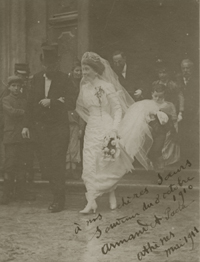 Click to enlarge
Click to enlarge
7th October 1910
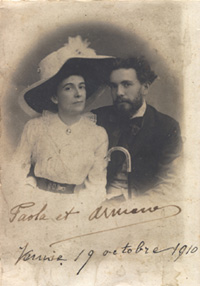 Click to enlarge
Click to enlarge
Venice - 1910
Meanwhile, he had married Paola Sampieri in Rome on 7th October 1910.
For her and for this ceremony he composed a very moving work for the organ: "Poème Nuptial".
It was Mr. Veroli who performed it on the great organ of Saint Ignatius on the wedding day.
This city was a stage on the way to Athens via Brindisi. Martin-Pierre (him again!) had said to his nephew: "if you go through Rome, pay a visit to the Sampieris - they are excellent friends". Indeed, Martin-Pierre was the godfather of Paola, their daughter.
Another family, these Sampieris! And what a family! Francesco Sampieri, a citizen of Rome had actively participated in the Risorgimento. As a political refugee in Paris, he had profited from the friendship of a fellow student, Giuseppe Napoleon Bonaparte, brother of Napoleon III, to become director of the catalogue department at the Imperial Library. At the same time, he became secretary to Prince Demidoff whose private residence he saved during the Commune.
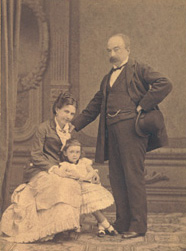 Click to enlarge
Click to enlarge
Professor of Italian at the Philotechnical College, he had a private student named Edma Breton, a very talented young singer. She had won the 2nd Prize for singing at the Paris Conservatoire at the age of 17 in 1875 and had often sung with Martin-Pierre Marsick, Taffanel, and her teacher Roger. She wanted to improve her Italian and Sampieri, then aged 53, was recommended to her, and the lessons were quickly transformed into a love duet. They were married and Paola was born in Paris in 1877. Sampieri had now taken Rome by storm and was the Paris correspondent for the newspaper "e;L’Opinione"e;. He was Italian and in favour of the Triplice. The Bonapartes were no longer there to protect him and so he was declared a “personae non grata”! The family returned to Rome where Paola was to become a maid of honour to the Queen of Italy, Marguerite of Savoy.
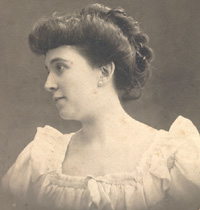 Click to enlarge
Click to enlarge
Thus, when Armand arrived at number 17, Lungo Tevere Mellini, he was somewhat intimidated by the great gateway and rang at a side door. It was Paola who opened the door of her painting workshop: thunderbolt! Despite the fact that the father-in-law-to-be strongly protested that Armand was "e;the serpent who had slithered into the house"e;, they got married and made a wonderful couple. Paola was at the feet of her Armand, and he covered her with overwhelming love for her. In 1958, at Paola’s death, he wandered aimlessly only to die of sorrow seven months later. There was nothing wrong with him – just immense grief.
 Greece
Greece
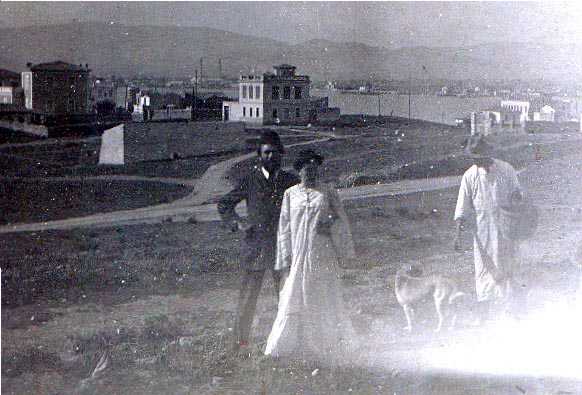 Click to enlarge
Click to enlarge
© archives Jacques MARSICK
With her, he was to discover Greece. Paola was an example of sheer intelligence and refinement. Ah! Greece! How often did she sigh when speaking of THEIR Grecian skies! How many stories were endlessly repeated! Her grandchildren knew her description of the visit to the Meteors on Horseback by heart. These were the happiest years for Paola and Armand!
It was in Athens, in particular, that the talents of Armand Marsick were able to blossom fully. He was revealed as a teacher, a reformer of studies at the Conservatoire, as the creator and conductor of the Symphony Orchestra, as a composer wishing to take his inspiration from Greek, musical folklore and above all noting down the tunes with methods akin to those of an archaeologist and innovator, in particular when transcribing the oriental modulations of this popular music.
Very soon he was to be appointed “ephor”, that is director of musical studies. From 1910, he completely reformed the conservatoire by imposing, for example, the composition treatise of Vincent d'Indy in the class of the same name. He was inspired by the organisation of studies in the conservatoires that he knew best, Liège and Paris. He completed his research into teaching methods with a European tour in 1913, going as far afield as Germany. At the conservatoire, he trained many musicians, the most famous of whom were Dimitri Mitropoulos and Georges Sklavos. All these pupils formed the hard core of Greek musical life and that of the conservatoire, nowadays the Odeon, for decades. His memory still remains very much alive today in Athens.
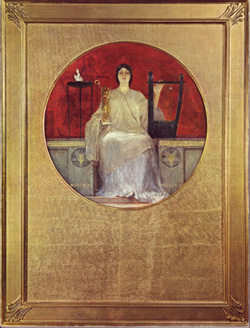
As soon as he arrived, he gathered together the embryos of the existing orchestra. He reorganised and reinforced the positions and as from 1909, was able to present an orchestra worthy of the name. Soon foreign reinforcements allowed comparison with the best European orchestras. He gave many concerts and not only in Athens – which enabled Greek music-lovers to hear the essential part of the repertoire, even though it was dominated by Saint-Saëns, the followers of Franck and Wagner. He also conducted many compositions of Greek musicians who were totally unknown in the rest of the world. In this field, he was always looking for composers who were little known or unknown to the public. Thus it would seem that he was the first to have conducted the symphonies of Gustave Mahler in Belgium.
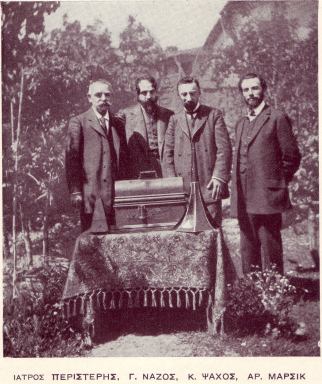

It was also in 1910 that he explored Greek musical folklore by participating in several expeditions to the Peloponnese and Aegean Islands. A photo shows him with G. Naxos, the director of the conservatoire, K. Psachos, professor, and a great specialist in Byzantine music and with Doctor Peristeris in front of a cylinder recording machine. Marsick noted all these folklore airs which were to be published in Athens in 1930. A number of folklore themes inspired the composer that he was, particularly in the prelude of the second act of his opera "e;Lara"e; or in the "e;Greek Tableaux"e; composed during a night crossing between Piraeus and Brindisi. He remained on the ship’s bridge and it was under a starry sky that he achieved his composition...
Even though Marsick was very taken up with his occupations at the conservatoire and with the orchestra, he composed several great works such as those that we have just quoted or whose composition he completed such as "e;Mountain Scenes"e;.
In 1914, Armand Marsick completed another opera "e;Lara"e; and in 1915 he began “The Nuptial Ring”, his last lyrical drama, completed in 1924 in Bilbao.
 The Saint Saëns festival
The Saint Saëns festival
The last noteworthy fact was the Saint-Saens festival in 1920.
Aged 85, Saint Saëns came to the festival which took place at the Municipal Theatre and the Herod Atticus Theatre at the foot of the Acropolis. A very fine letter from Saint-Saëns to Armand Marsick betrayed all the emotion of the master.
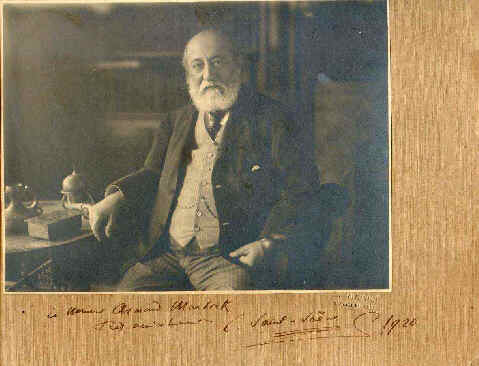 Click to enlarge
Click to enlarge
In friendship C.Saint-Saëns-1920
© archives Jacques MARSICK
Click to enlarge
"My dear Marsick,
in the midst of this crowd I cannot express the pleasure I felt on hearing the fine rendition of this symphonic poem and the Little Symphony which
I had not heard for such a long time, always being away from Paris during the concert season.
I know all the pitfalls with which the symphony is fraught and I know how much care you must have taken to give such a perfect performance.
As for "The Youth of Hercules", it was marvellous both in its colour and the enjoyment derived.
I ask you to congratulate your valiant orchestra and thank them on my behalf for the great joy that they procured for me thanks to your skilful conducting.
Your grateful and devoted fellow-composer,
C. Saint-Saëns"
 Departure to Spain
Departure to Spain
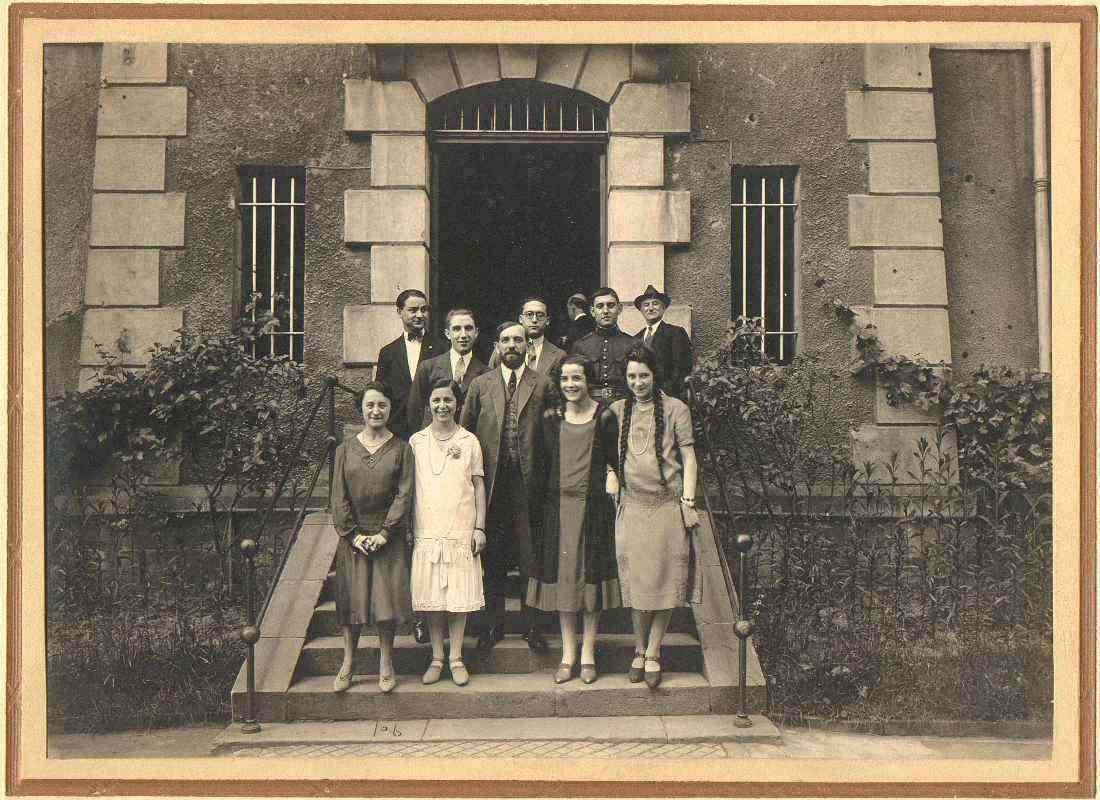
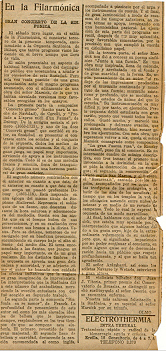
But the Turkish-Greek war was making the political climate very unhealthy. The Marsick family left Greece (their son, Paul-Louis, was born in 1916). The cosmopolitan nature of the family was all the more accentuated by its taking root in Spain. Armand had just been appointed as the first Director of the new conservatoire in Bilbao.
He took up his post on 25th February 1922, and on 8th March conducted the newly-formed orchestra’s first concert. It was the "Orquestra Sinfónica de Bilbao" of today. The family remained in Bilbao until 1927.
Spain is not Greece, and Bilbao is damp and rainy, and at the time a sad industrial port. Paola soon began to regret the Grecian skies.
Armand devoted himself entirely to the conservatoire and the orchestra. He revealed French music to the Spaniards. Concerts were sold out on subscription. Many artists came to perform in Bilbao at the time.
 Return to Liège
Return to Liège
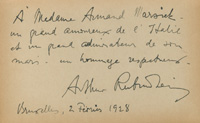 Click to enlarge
Click to enlarge
to Paola Marsick
© archives Jacques MARSICK
After exactly thirty years of absence, Armand Marsick returned to Belgium where he was immediately appointed professor of harmony at the Royal Conservatory of Liège (1927-1942). He created the “ Liège Association for Popular Concerts ”, better known by the name "the Marsick Concerts" (1927-1939). In 1933 a great event took place in Jupille (a locality in the suburbs of Liège) when a commemorative plate was inaugurated at the birthplace of Martin-Pierre Marsick. Armand conducted the concert with, in particular, the Triple Concerto by Vivaldi, performed by Carl Flesch, Thibaud and Enesco. In 1938, he had great pleasure in returning to Greece where he conducted "his" orchestra at the Olympia Theatre, for an evening performance in homage.
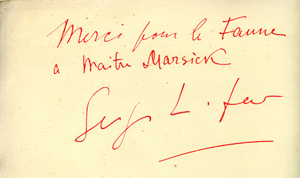 Click to enlarge
Click to enlarge
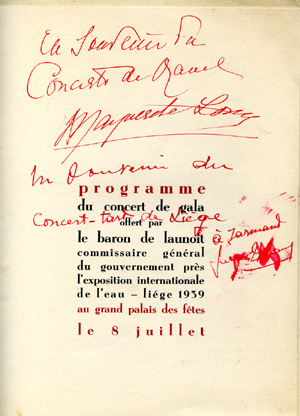 Click to enlarge
Click to enlarge
by Mary Marquet,
Marguerite Long, Serge Lifar
and Jacques Thibaud
The Water Exhibition in Liège, in 1939, marked the end of the Liège concerts. He conducted the "Marsick Concerts" in Brussels from 1942 to 1945.
His return to Belgium had also been marked by new compositions: "Oriental Pace and Dance" (1929), "Tableaux of a Journey" (1937) and "Loustics en fête" (1939). Ten years later he wrote his last works: a "Quatuor for horns" and "Three Symphonic Pieces".
From then on, after the war, he shared his time between chairing panels and his new vocation as a grandfather. He was an indefatigable walker and took his grandchildren into the Soignes Forest (to the south-east of Brussels where he had lived from 1927) and on rainy days took them to museums, especially the 50th Anniversary Art and History Museum, near his home. But he also went with them to the theatre, concerts, opera – how can one remember these moments without emotion, even though Armand Marsick poured insult on the actors whom he considered mediocre ... to the shame of the grandson who was with him and who did not know where to put himself! Paola followed him everywhere and Armand was attentive to a thousand details.
From this blessed time onwards there remained one of the last concerts of Jacques Thibaud in Belgium under his leadership and the festivities organised in Brussels for his 80th birthday in 1957.
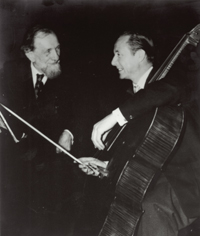
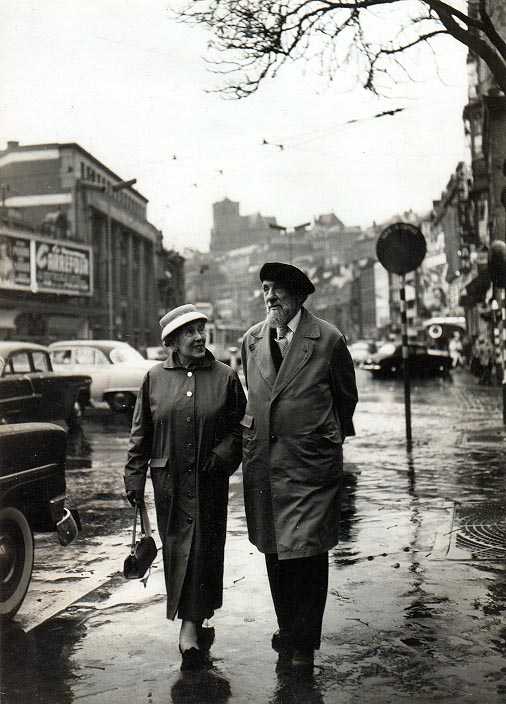 Click to enlarge
archives Jacques MARSICK
Click to enlarge
archives Jacques MARSICK
© Journal "La Meuse"-Liège-1957
The "little master" had a fine career! ...
On the night of his death, he sang all his operas for the last time and took his last breath in the early morning of 30th April 1959. On the 1st May, his son, Paul-Louis, performed "The Grecian Tableaux" with the Belgian National Orchestra. Ten years later, to the day, Paul-Louis died. A strange coincidence!
Translation : Mrs Pippa Fabre october 2014
 version française
version française english version
english version Nederlandstalige versie
Nederlandstalige versie